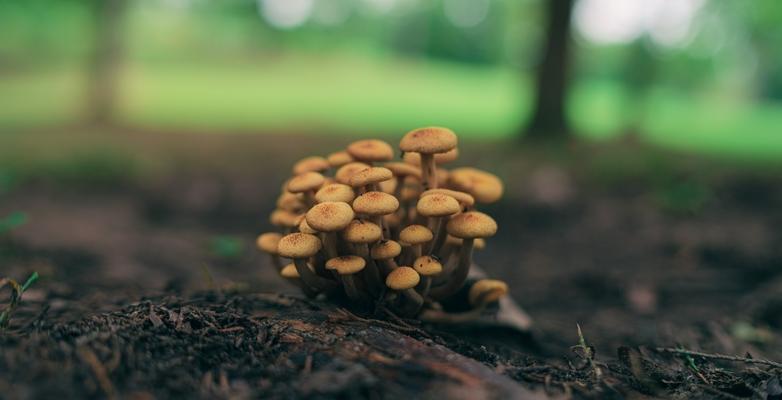
Climate Change, Zombies, and Fungi: How Realistic is The Last of Us?
There’s a fungus among us – and the climate crisis could be to blame.
HBO’s The Last of Us has it all: zombies, action, and – the climate crisis? If you’re anything like us, the show may have sent you into a tailspin followed by some frantic Googling.
In the opening scene, we meet a scientist in the 1960’s who claims that viruses and bacteria aren’t the pandemics that humans should fear the most – instead, it’s fungi. Driven by a warming planet, he claims, Cordyceps fungus could mutate to survive in warm-blooded creatures, spreading to humans and causing us to become a billions-strong army of “puppets with poisoned minds,” hell-bent on destroying the human race. A show about a zombie apocalypse is scary on a good day, but backing it up with science about the already-present climate crisis? That’s downright terrifying. So, let’s walk through the science (spoiler-free, we promise) together.
HAVE YOU MET MY ZOMBIE FRIEND? HE’S A REAL FUN-GI
For our fellow Planet Earth aficionados, the concept of a zombie fungus might not seem entirely foreign to you. David Attenborough takes us through the rainforest to observe an array of ants and insects all infected by a species of parasitic fungi that takes control of its host’s mind and body. As the fungus takes hold, it takes control of the ant’s nervous system to hijack its muscles and physical movements. The ants, now “zombified,” are compelled to climb up a branch, take a firm hold with their mandibles, and die as a long tentacle-like form grows through its head, only to release more deadly spores to its colony members.
It’s also true that ingesting fungi can have a distinct impact on our mental state – after all, magic mushrooms and LSD are both derived from fungi. In fact, there’s even some evidence that the Salem Witch Trials were a result of fungal infestation in the community’s supply of rye, causing convulsions and delusions – leading some doctors to believe that the victims had been bewitched. The show even uses this same premise, claiming that the Cordyceps spores spread through the world’s flour supply.
Perhaps the show’s most alarming true-life parallel is its tie to the climate crisis – something the science and our collective global experience tells us is already here. The show’s scientist claims that our warming planet would cause the fungus to mutate and adapt to warmer temperatures, allowing it to survive in temperatures above 94ºF - eerily suggesting that human infection could be a possibility.
Yikes.
Based on the show, we have it all – the fungus, the substrate, and the warming planet – but just how likely is a climate-fueled zombie apocalypse really?
ARE WE IN REALLY TRUFFLE?
In short, while there’s a little bit of science backing the show, you will not be overtaken by a mushroom if you’re not on the Atkins diet. Each Cordyceps fungus only attacks one specific type of insect, and they’ve coevolved together since well before humans were wandering around. In fact, they’re so specific that one type of ant-attacking fungus can’t even infect a different species of ant. According to parasitic fungi expert João Araújo, it would take millions and millions of years of evolution to make the jump to mammals. After all, mold thrives in damp, dark surfaces between 77ºF-86ºF - far below the average person’s internal body temperature. While we can get skin infections from fungi, they’re typically on damp places that don’t often see the sun (think athlete’s foot) that tend to be cooler than the rest of our body. Despite our warming planet, it’s unlikely that we’re appealing enough for Cordyceps to make the jump from ants to humans – at least for a few million years.
However, the idea that fungi will become more prevalent as average global temperatures rise isn’t science fiction. A recently-discovered fungi, called Candida auris, popped up on three different continents seemingly out of nowhere and is thought to have adapted to the planet’s warming temperatures. While it won’t zombify your loved ones and is usually not problematic for healthy individuals, it’s mostly found in hospitals and can pose a serious threat to those with preexisting conditions.
That’s one of the harsh realities of the climate crisis – while we’re contending with extreme weather and sea-level rise, we also have to worry about illnesses and their vectors spreading far and wide as new regions warm and become habitable for pests. One study found that in the past century, malaria-carrying mosquitoes are moving away from the Equator at an average rate of about 3 miles per year. Experts have called the spread “cleanly climate-linked" and say that the consequences could be devastating – and deadly – for countries not prepared to deal with an outbreak.
THERE’S NOT MUSH-ROOM FOR DEBATE: WE HAVE TO ACT ON CLIMATE
In short: no, global warming will not make you become a zombie attempting to eat Pedro Pascal – but the science backing the show holds up.
If we don’t adequately address the climate crisis and global temperatures continue to warm, we open up new regions to fungal, bacterial, and viral infections. It’s a future no one wants to see, but it’s already becoming reality. After all, even the zombie version of yourself deserves clean air and safe communities.
LEARN MORE
If you’re ready to take the next step and become more active in the fight for climate solutions, sign up for our email advocacy list today. Get the latest from the movement for climate solutions and how to improve the lives of people everywhere by taking climate action.




